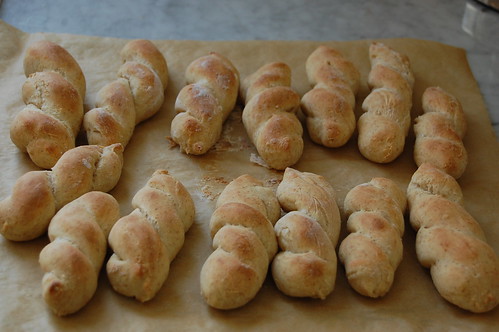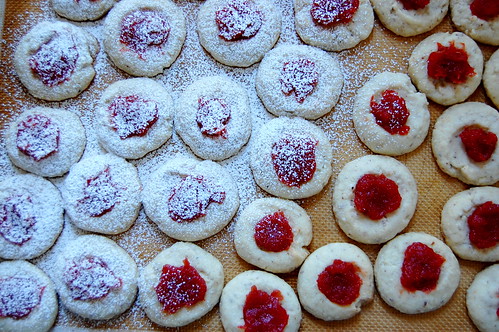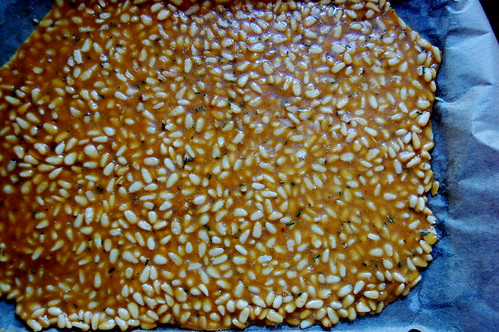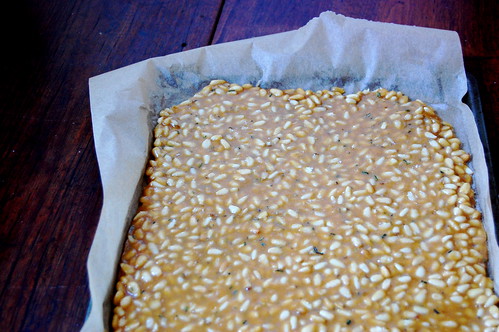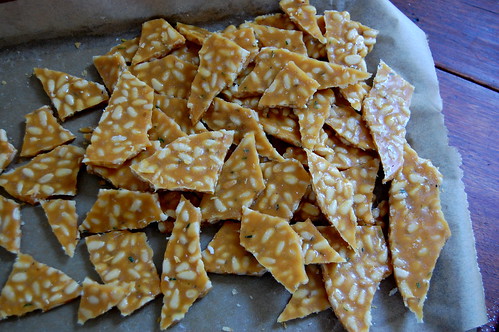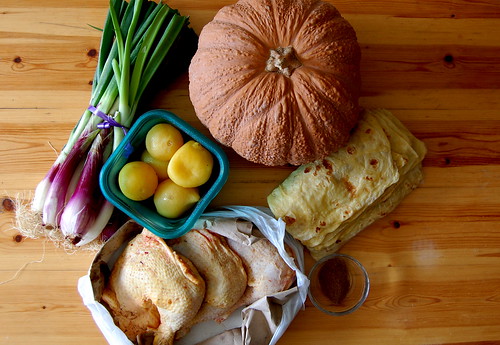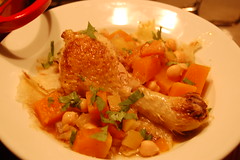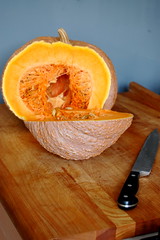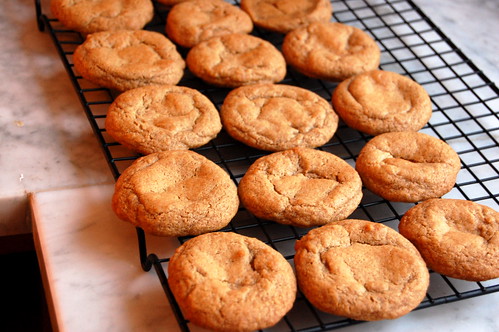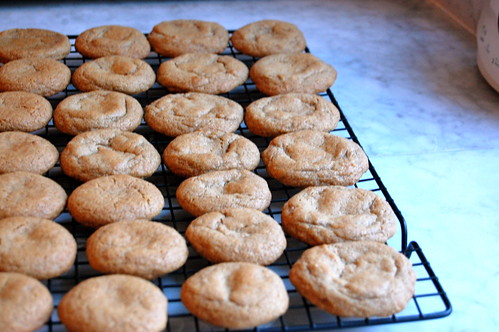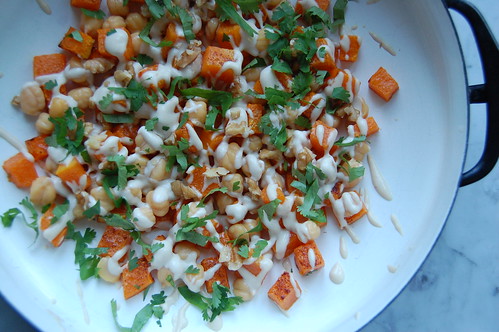
This is one of those recipes that I make all the time and somehow manage to never put on the blog. However, recently several people have asked me for the recipe, and since I was already cooking with pumpkin and chickpeas recently, I can finally share it here.
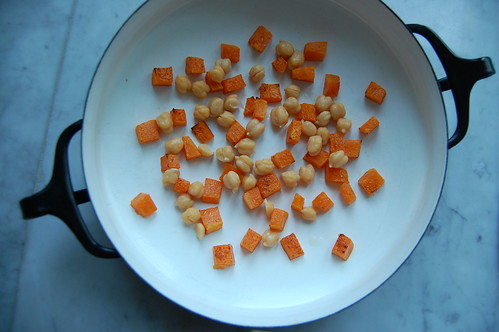
This originally came from the second Moro Cookbook, (where we just had lunch last week) but I've been making it so long that it's transformed into it's own sort of thing. Sometimes I make it with only tahini sauce, whereas other times I layer the dish with both tahini sauce and yogurt. Other time I change up the vegetables, making this with fried eggplant rounds or sauteed spinach. Someone commented to me recently that the eggplant version reminded them of fetteh with eggplant, only lighter and not so glopped with yogurt (don't get me wrong, I love fetteh, but sometimes something more elegant is in order). This is a really great thing to feed a crowd and looks beautiful on a buffet table or as part of a dinner party.
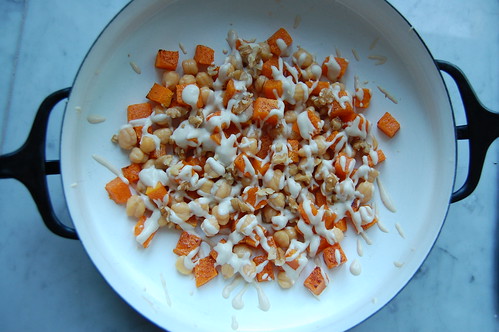
Pumpkin and Chickpea Salad with Tahini
Pumpkin can sometimes be watery, and if you think that may be the case with yours, I like to deep fry instead of roast the pumpkin. The measurements given are just a rough guideline, you can make as much or as little as you want. See below for several variations on this salad.
2 cups cooked chickpeas
2 cups of 1/2-inch cubed pumpkin
1/2 teaspoon cinnamon
1/4 teaspoon nutmeg
salt to taste
2 tablespoons pine nuts, toasted
chopped cilantro and parsley for serving
1 small container plain yogurt (optional)
For tahini sauce:
1/2 cup tahini
2 tablespoons lemon juice
pinch salt
1. Mix the tahini, lemon, and salt in a bowl. The mixture should get very thick. Slowly add water to the mixture until it reaches a pourable consistency again. (If you accidentally add too much water, pop it in the fridge and it will thicken up again.)
2. Preheat the oven 400 F. Toss the cubed pumpkin with olive oil to coat, and cinnamon, nutmeg, and salt. Spread the pumpkin out onto a baking sheet and roast until just tender. About 15-20 minutes with a regular oven and less if using convection. The pumpkin should be just tender when poked with a knife.
3. While the pumpkin is cooking, place the chickpeas in a saucepan with a pinch of salt and place them over medium heat, just to warm them up a bit.
4. Artfully arrange the chickpeas and pumpkin in a serving dish. If I am making a particularly large quantity of this dish, I will drizzle a layer of tahini sauce and yogurt over the dish when I'm about half way through, then pile on the remaining pumpkin and chickpea.
5. Using a spoon, drizzle the tahini sauce generously over the dish, then drizzle some of the yogurt over if using. Top with the pine nuts and sprinkle with herbs. Serve warm or at room temperature.
Eggplant and Chickpea Salad: Substitute sliced eggplant rounds for pumpkin. Salt the eggplant rounds, let sit twenty minutes, pat eggplant dry then fry the rounds in a large saucepan in an inch of oil until browned and tender. Drain on paper towels. Sprinkle the eggplant with Aleppo pepper then proceed with the recipe as usual. You'll definitely want the yogurt here.
Try another variation with roasted cauliflower. Or make it with sauteed spinach. If you want to dress this up, try adding pomegranate seeds or dried fruit (currants, golden raisins).

